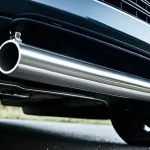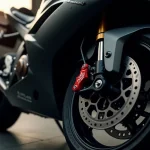Foundational concepts of rear differential lock performance
Understanding rear differential lock basics is essential for grasping how off-road vehicles conquer challenging terrain. A rear differential lock functions by forcing both rear wheels to rotate at the same speed, regardless of traction differences. This contrasts with an open differential, where the wheel with less grip spins freely, often leading to stuck vehicles.
The differential lock function enhances off-road traction by preventing wheel slip on low-grip surfaces like mud, sand, or rocks. By locking the rear differential, power is evenly distributed, allowing the stuck wheel to regain grip and forward momentum. This crucial feature transforms a vehicle’s handling, especially in uneven or slippery conditions, making it indispensable for serious off-road driving.
Also to read : Ultimate Guide: Safely Installing a Tow Bar on Your Family’s Mid-Sized Vehicle
There are key variations in differential lock systems, including manual, automatic, and electronic locks. Manual locks require driver activation, offering control but demanding attention. Automatic locks engage when wheel slip is detected, optimizing traction without driver input. Electronic systems combine sensors and controls for precise engagement and disengagement, balancing convenience with performance. Each system caters to different driver preferences and vehicle designs, but all improve traction by manipulating rear differential lock mechanics effectively.
Step-by-step guide to optimizing rear differential lock
Optimizing rear differential lock requires careful inspection and precise adjustment to ensure reliable traction. Start by checking the differential lock actuator for wear or damage. Clean and lubricate components as needed; this preserves smooth engagement and prevents malfunction.
Additional reading : Must-see guide: vital components of your car’s emergency braking system to inspect before hitting the road
Next, follow step-by-step instructions to adjust the rear differential lock’s mechanical linkage. This involves loosening fasteners, aligning the actuator arm at the midpoint between locked and unlocked positions, then tightening securely. Precise rear differential adjustment guarantees that the lock fully engages without binding or slipping.
Calibration is critical after adjustment. Test the lock’s operation under controlled conditions, like low-speed off-road scenarios, to confirm engagement and release timings are optimal. Factors such as terrain type, vehicle load, and tire condition influence the effectiveness of differential lock settings. Adjustments might need to be fine-tuned accordingly.
By adhering to these procedures, you can maximize traction and vehicle control in rugged environments. Properly optimized differential lock improves performance while reducing drivetrain stress. This ensures safer and more enjoyable off-road driving experiences.
Advanced maintenance and care for rear differential locks
Proper differential lock maintenance is crucial to ensure your rear differential’s longevity and off-road durability. Regular inspection should focus on identifying wear signs such as unusual noises, excessive play, or leaks around the differential housing. Early detection of these signs helps prevent costly repairs and unexpected failures during use.
Lubrication is a cornerstone of rear differential care. Choosing the right lubricant is essential; synthetic gear oils with the correct viscosity and additives protect against heat and friction. Apply lubrication according to manufacturer recommendations, ensuring all moving parts receive adequate coverage to minimise wear. Proper lubrication maintains smooth lock engagement and reduces stress on components.
To maximise off-road durability, combine scheduled maintenance with mindful usage. Avoid engaging the rear differential lock on dry, high-traction surfaces to prevent unnecessary strain. Monitoring the differential lock’s response and promptly addressing any mechanical irregularities will extend its service life, improving overall vehicle reliability in demanding conditions.
DIY upgrades and product recommendations
Upgrading your rear differential lock can significantly enhance off-road traction and vehicle control. Choosing the right aftermarket products is crucial to achieve reliable performance. When selecting components, focus on the compatibility with your vehicle’s make and model, as well as the expected conditions you’ll face. High-quality materials and precision engineering are key to increasing durability and reducing the risk of failure.
For DIY enthusiasts, installation requires careful preparation. Before starting, gather tools such as a socket set, torque wrench, and lubrication suitable for gears. Clear the working area and refer to a detailed service manual specific to your differential type. It’s essential to drain the differential fluid to avoid spills and replace it after installation to maintain lubrication.
During installation, ensure proper alignment of gears and secure the lock mechanism firmly to avoid slippage. Test the operation manually before reassembling the housing. When looking for product recommendations, consider reputable brands known for their rear differential lock upgrades and positive user reviews. Investing in well-designed kits can save time and provide better performance on diverse terrains, making your off-road adventures safer and more enjoyable.
Troubleshooting and resolving common rear differential lock issues
Identifying the cause of rear differential lock problems starts with careful troubleshooting differential lock functions. Performance issues often arise from electrical faults, mechanical wear, or contamination. For example, if the lock fails to engage, check the electronic control unit and wiring for damage. Mechanical failures might include worn gears or fluid leaks, which reduce effective engagement.
A practical approach involves these steps:
- Inspect the actuator and wiring to ensure power supply and signals are intact.
- Check the differential fluid for contamination or low levels, as these affect lock performance.
- Test mechanical components like splines, gears, and bearings for wear or damage.
When diagnosing, consider whether the problem is electrical or mechanical, as repair processes differ. Electrical issues might require component replacement or rewiring, while mechanical faults call for parts replacement or fluid changes.
If troubleshooting differential lock problems becomes complex or beyond basic repair, consulting professional off-road repair specialists is advisable. Their expertise ensures correct diagnosis and maintains vehicle safety. This prevents aggravating issues that could lead to costly repairs or compromised off-road performance.
Safety techniques and operational precautions for differential lock use
Mastering rear differential lock operation is essential to ensure both vehicle performance and off-road safety. Engaging the differential lock at inappropriate moments can strain the drivetrain, so understanding when and how to use it is crucial. Primarily, activate the lock only when one wheel loses traction, such as on slippery or uneven terrain, to evenly distribute power and maintain control.
Safe operating practices emphasize gradual engagement and disengagement of the differential lock. Sudden activation at high speeds can lead to mechanical damage and loss of vehicle stability, putting passengers at risk. Likewise, maintaining moderate speeds while the differential is locked prevents undue stress on the vehicle systems.
Risk mitigation also involves confirming that the surface conditions warrant differential lock use—hard, flat surfaces typically do not require engagement, as they can cause tire scrubbing and drivetrain wear. Familiarize yourself with your vehicle’s guidelines on safe usage and observe any visual indicators or dashboard warnings related to the rear differential lock.
Understanding these off-road safety precautions enhances your confidence and vehicle longevity. For clearer comprehension, consult visual guides or diagrams illustrating proper handling steps, ensuring informed and protected operation in challenging environments.



